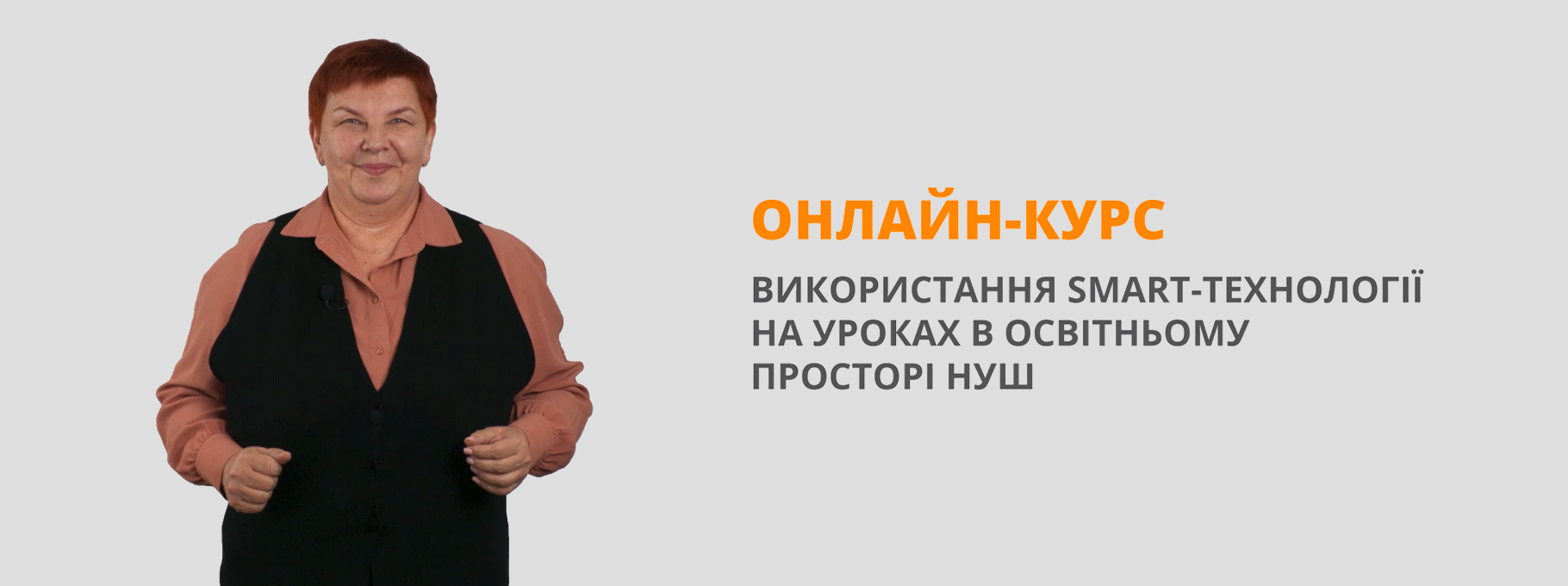Етнологія.Сербія.(Англійською мовою)
Ethnogenesis (origin of an EG).
Origin hypotheses of the Serbs:
Iranian theory (Theory about Iranian origin of the Serb ethnonym assumes that ancient Serbi / Serboi from north Caucasus (Asiatic Sarmatia) were a Sarmatian (Alanian) tribe)
Autochthonic theory (This theory assumes that Serbs are an autochthonic people in the Balkans and Podunavlje, where they presumably lived before historical Slavic and Serb migration to the Balkans in the 6th-7th centuries.)
Proto-Slavic theory (Sporoi (Greek: Σπόροι) was according to Eastern Roman scholar Procopius (500–560) the old name of the Antae and Sclaveni, two Early Slavic branches. Procopius stated that the Sclavenes and Antes spoke the same language, but did not trace their common origin back to the Venethi but to a people he called "Sporoi". In the mid-9th century the so-called Bavarian Geographer wrote that people named Zeriuani had so large kingdom that all Slavic peoples originated from there (or from them). According to one of interpretations, Zeriuani are identified with Serbs, and there are opinions that "Serbs" was an old name of all Slavic peoples. However, according to other opinions, Zeriuani might be a name used for Severians or Sarmatians instead for Serbs)
Ethnic history (formation of an EG).
Early Slavs, especially Sclaveni and Antae, including the White Serbs, invaded and settled Southeastern Europe in the 7th century. Up until the late 560s their activity was raiding, crossing from the Danube, though with limited Slavic settlement mainly through Byzantine foederati colonies. The Danube and Sava frontier was overwhelmed by large-scale Slavic settlement in the late 6th and early 7th century.[40] What is today central Serbia was an important geo-strategical province, through which the Via Militaris crossed.This area was frequently intruded by barbarians in the 5th and 6th centuries.The numerous Slavs mixed with and assimilated the descendants of the indigenous population (Illyrians, Thracians, Dacians, Romans, Celts).White Serbs from White Serbia coming to an area near Thessaloniki and then they settled area between Dinaric Alps and Adriatic coast.
With Turkish invaders beginning their conquest of the Balkans in the 1350s, a major conflict ensued between them and the Serbs, the first major battle was the Battle of Maritsa (1371) in which the Serbs were defeated. With the death of two important Serb leaders in the battle, and with the death of Stephen Uroš that same year, the Serbian Empire broke up into several small Serbian domains.These states were ruled by feudal lords, with Zeta controlled by the Balšić family, Raška, Kosovo and northern Macedonia held by the Branković family and Lazar Hrebeljanović holding today's Central Serbia and a portion of Kosovo. In 1389, the Serbs faced the Ottomans at the Battle of Kosovo on the plain of Kosovo Polje, near the town of Priština. Both Lazar and Sultan Murad I were killed in the fighting. The battle most likely ended in a stalemate, and afterwards Serbia enjoyed a short period of prosperity under despot Stefan Lazarević and resisted falling to the Turks until 1459.
Many Serbs were recruited during the devshirme system, a form of slavery in the Ottoman Empire, in which boys from Balkan Christian families were forcibly converted to Islam and trained for infantry units of the Ottoman army known as the Janissaries. A number of Serbs who converted to Islam occupied high-ranking positions within the Ottoman Empire, such as Grand Vizier Sokollu Mehmed Pasha and Minister of War field marshal Omar Pasha Latas.
Geographical distribution
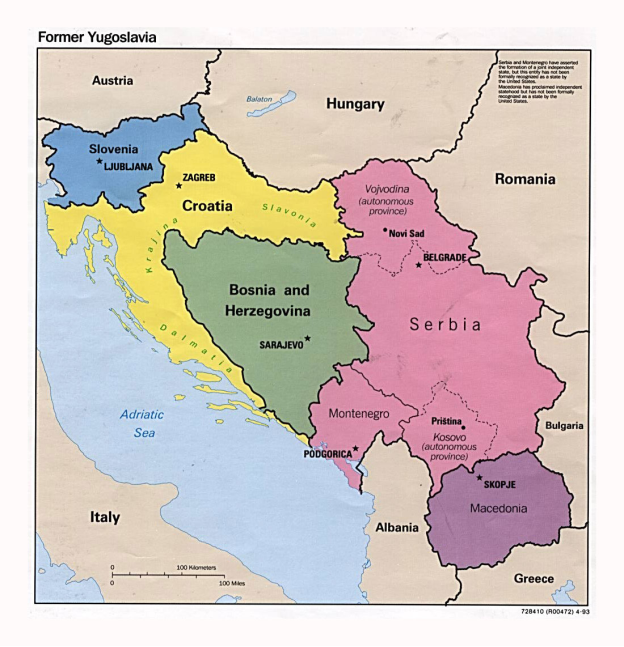
Ethnic location: central and western part of the Balkan Peninsula (South- East Europe). The population consists of 16,282,000 people, 8,500,000 living in the above-mentioned ethnic locations, 1,782,000 in the republics of former Yugoslavia, 60,000 in neighboring countries, 882,000 in other European countries, 720,000 in North America, and about 170,000 in other parts of the world. In 1688, the Habsburg army took Belgrade and entered the territory of present-day Central Serbia. Louis William, Margrave of Baden-Baden called Serbian Patriarch Arsenije III Čarnojević to raise arms against the Turks; the Patriarch accepted and returned to the liberated Peć. As Serbia fell under Habsburg control, Leopold I granted Arsenije nobility and the title of duke. In early November, Arsenije III met with Habsburg commander-in-chief, General Enea Silvio Piccolomini in Prizren; after this talk he sent a note to all Serb bishops to come to him and collaborate only with Habsburg forces.
A Great Migration of the Serbs (1690) to Habsburg lands was undertaken by Patriarch Arsenije III.The large community of Serbs concentrated in Banat, southern Hungary and the Military Frontier included merchants and craftsmen in the cities, but mainly refugees that were peasants.
The Serbian Revolution for independence from the Ottoman Empire lasted eleven years, from 1804 until 1815. The revolution comprised two separate uprisings which gained autonomy from the Ottoman Empire that eventually evolved towards full independence (1835–1867). During the First Serbian Uprising, led by Duke Karađorđe Petrović, Serbia was independent for almost a decade before the Ottoman army was able to reoccupy the country. Shortly after this, the Second Serbian Uprising began. Led by Miloš Obrenović, it ended in 1815 with a compromise between Serbian revolutionaries and Ottoman authorities.Likewise, Serbia was one of the first nations in the Balkans to abolish feudalism. Serbs are among the first ethnic groups in Europe to form a nation and a clear sense of national identity.
The country was later renamed the Kingdom of Yugoslavia, and was led from 1921 to 1934 by King Alexander I of the Serbian Karađorđević dynasty.During World War II, Yugoslavia was invaded by the Axis powers in April 1941. The country was subsequently divided into many pieces, with Serbia being directly occupied by the Germans.Serbs in the Independent State of Croatia (NDH) were targeted for extermination as part of genocide by the Croatian ultra-nationalist, fascist Ustaše.The Ustaše view of national and racial identity, as well as the theory of Serbs as an inferior race, was under the influence of Croatian nationalists and intellectuals from the end of the 19th and the beginning of the 20th century. Jasenovac camp was notorious for the barbaric practices which occurred in it. Sisak and Jastrebarsko concentration camp were specially formed for children. Serbs in the NDH suffered among the highest casualty rates in Europe during the World War II, while the NDH was one of the most lethal regimes in the 20th century.Diana Budisavljević, a humanitarian of Austrian descent, carried out rescue operations from Ustaše camps and saved more than 15,000 children, mostly Serbs.
More than half a million Serbs were killed in the territory of Yugoslavia during World War II. Serbs in occupied Yugoslavia subsequently formed a resistance movement known as the Yugoslav Army in the Homeland, or the Chetniks. The Chetniks had the official support of the Allies until 1943, when Allied support shifted to the Communist Yugoslav Partisans, a multi-ethnic force, formed in 1941, which also had a large majority of Serbs in its ranks in the first two years of war. Over the entirety of the war, the ethnic composition of the Partisans was 53 percent Serb.[89][90] During the entire course of the WWII in Yugoslavia, 64.1% of all Bosnian Partisans were Serbs.Later, after the fall of Italy in September 1943, other ethnic groups joined Partisans in larger numbers.
At the end of the war, the Partisans, led by Josip Broz Tito, emerged victorious. Yugoslavia subsequently became a Communist state. Tito died in 1980, and his death saw Yugoslavia plunge into economic turmoil. Yugoslavia disintegrated in the early 1990s, and a series of wars resulted in the creation of five new states. The heaviest fighting occurred in Croatia, Bosnia and Herzegovina, whose Serb populations rebelled and declared independence. The war in Croatia ended in August 1995, with a Croatian military offensive known as Operation Storm crushing the Croatian Serb rebellion and causing as many as 200,000 Serbs to flee the country. The Bosnian War ended that same year, with the Dayton Agreement dividing the country along ethnic lines. In 1998–99, a conflict in Kosovo between the Yugoslav Army and Albanians seeking independence erupted into full-out war, resulting in a 78-day-long NATO bombing campaign which effectively drove Yugoslav security forces from Kosovo. Subsequently, more than 200,000 Serbs and other non-Albanians fled the province.
Race, physical features.
Serbs belong to the Caucasian race. They have fair skin, a wide straight eye incision and a long nose. Characteristic features are dark hair and eye color and tall stature
Religion, beliefs
In the early Middle Ages Serbs accepted Christianity, and according to 1991 . census, 95% of population belong to Eastern Orthodox Christians. The old Slavonic pagan religion that Serbs had brought from their former habitations survived for a long time along with Christianity. The cult of the ancestors and the belief in the life after death, survived in the Memorial Feasts at the Graveyards (zadusnice), days when people visit the graves, light candles for the souls of the dead, and offer food and drink. There are four main zadusnice feasts, always on Saturdays, usually on a second Saturday before the beginning of the Lents (Easter Lent or Christmas Lent), the Saturday before the Holy Trinity Day, before Saint Kiriak's Day (12th October), and Saint Demetrius Day (8th November). In some strata of Serbian society, especially among the elderly, some superstitions and pre-Christian beliefs (malignant eyes, fairies, witches, vampires, unclean objects) persisted until the fifties of this century.
Traditional beliefs, many of them changed by the influence of Christianity, survived in ritual processions down to the 20th century, and then changed into popular entertainment or tourist attractions, like lazarice - a procession of maids on Lazarus Saturday, or koledari - a procession of masked youths at Christmas.
Social structure. Settlements. Traditional occupations.
In the second half of the 20th century Serbian society underwent a swift social transformation, with migrations from rural to urban centers, and economic transition from agriculture to industry. Although dynamic and quick, these changes did not cause great social upheavals. Two main problems are the lack of employment and the lack of housing. They were aggravated by the destruction of former Yugoslavia in the early nineties of the century, by the war in the neighboring regions, and the arrival of more than half a million refugees, together with the imposition of international economic sanctions. These events also caused numerous family problems (mixed marriages, separated families, etc.). Human rights are not limited in any way: men and women, different nationalities and social strata, all have the same rights. With the end of ideological single-mindedness imposed by communists (1945 - 1990), the civil rights and freedoms began to expand towards the scope and standards that Serbia had had in the earlier periods of its history. Starting from the native democratic tradition and the love for freedom, Serbs are now striving to revive and improve democracy in their country. Although the country is rich in wine and brandy (especially the famous sljivovica), alcoholism has never been a major social problem in the country. It does not include an important percentage of the populace. The same applies to the problem of drugs. They are taken by a smaller number of young people, mainly in larger cities.
Working habits and the preparation of young people for future occupations and productive work began at an early age among the Serbs, by including children into household chores, according to their age and capabilities (taking care of chicken, then sheep, gathering of fruits, teaching girls to knit, to take care of household chores, to weave cloth). Although farming and cattle breeding were main branches of economy, Serbs developed many crafts and brought them to perfection in the Middle Ages (making of tools and arms, stone cutting, wood carving, goldsmithy, pottery making, leather making). During the Turkish rule Serbs had to produce everything they needed for themselves, so that craftsmanship was highly valued, and a particular caste of craftsmen was formed. Serbian craftsmanship suffered badly during the German occupation from 1941 to 1945, and it was strongly suppressed during the communist rule, when all private business and individual initiative were cut down. But in spite of all this, some traditional crafts have survived and remained productive until the present day, like pottery and ceramics , making of traditional leather shoes, weaving of carpets with lively colored designs, hand-knitting of woolen sweaters, caps, jackets , and stone-cutting.
7. Culture:
7.1 Material culture: Artefacts. Architecture. Clothes. Food. Households.
Clothing
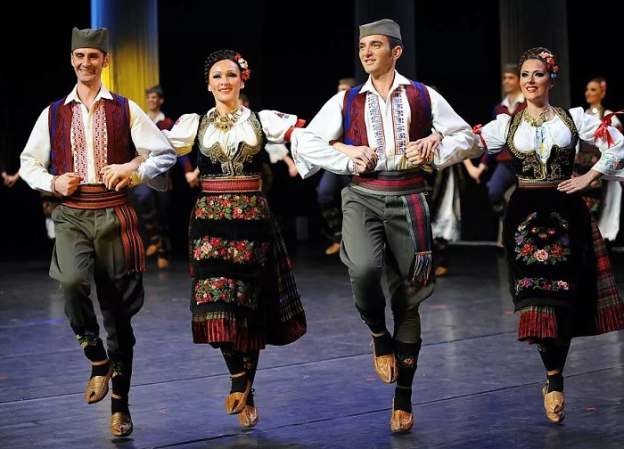
Until the end of the 19th century, women produced material and made dresses for themselves and their families. Then the professional dress-making took over, in towns and later in villages. Traditional Serbian folk costumes developed through ages and reached the summit of beauty and elegance by the end of the 19th century. Differences among the costumes are very great and depend on the region from which they come, so that the variety and perfection of the work are a wonder of imagination and craft of the folk.
Traditional Serbian female dress consists also of opanci, embroidered woolen socks that reached to the knees and nazuvice. Skirts were very varied, of plaited or gathered and embroidered linen, with tkanice serving as a belt. An important part of the costume were aprons (pregace) decorated with floral motifs. Shirts were in the shape of tunics, richly decorated with silver thread and cords was worn over the shirt. In some areas it was replaced by an upper sleeveless dress of red or blue cloth, knee-long, richly decorated and buttoned in front (zubun). Scarves and caps bordered with cords were worn as headdress. Girls also wore collars, or a string of gold coins around their throats, earrings, bracelets, and their caps were decorated with metal coins or flowers. Young people do not wear this kind of costume nowadays. It can be seen on elderly villagers, as tourist attraction, or in museums. From the 19th century on, Serbs have adopted the usual European way of dressing.
Food

Serbia is rich in agricultural and cattle breeding produce, vegetables and fruit, so it is natural that Serbs have a very strong interest in food. Th. Serbs eat a lot of wheat bread, made with or without yeast. A special bread without yeast, pogaca, is made for special occasions. In former times proja (a kind of corn bread) was more common. Bread is also made of barley, millet and rye in the mountains. Cheese, cream cheese (kajmak), boiled eggs and ham (smoked or dry) are served as hors d'oeuvres. They are followed by consommes and soups (like the famous Backa soup made of four kinds of meat). Vegetable dishes made of string beans, potatoes, and cabbage are very popular. The "wedding feast cabbage" is a special culinary treat, made of large chunks of cabbage, mixed with several kinds of meat and spices and boiled for 12 hours at least. Different dishes made with beans are also very popular, as well as paprika and sour cabbage (sauerkraut) leaves stuffed with ground meat, rice and spices (sarma). There are various salads: the most popular, srpska is made of tomatoes, paprika, onions and dressing, and its variety with cheese is called sopska.. Sour and sharp paprika filled with cheese and sour milk (yogurt) are also served very often. Meat is eaten in all forms (boiled, fried, roasted), in many kinds of dishes made of pork, beef, mutton, kid or chicken, or (as the Serbs prefer) roasted on a spit. Fish is also popular, and regions along the Danube are famous for their fishermen's pots (alaska corba). Pitas are made with many fillings, salty or sweet, the most common sort being gibanica (pita leaves filled with cheese, cream and eggs). On feast days there is an abundance of different dishes, 12 sorts of small cakes and several large cakes. These dishes are accompanied by brandy slivovica (plum brandy), cool or warmed up, by many good local wines, home made fruit juices, and coffee to end the feast.
Architecture
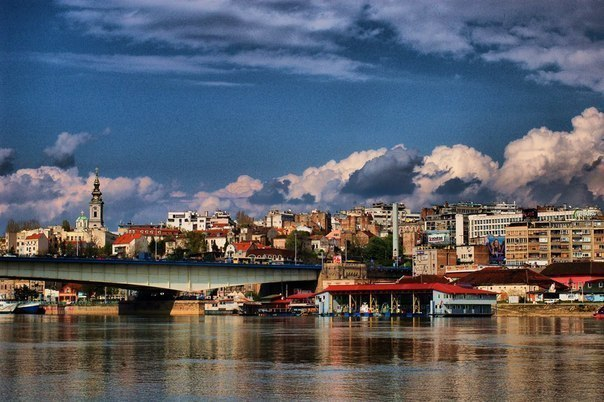
The architecture of Serbia has a long, rich and diverse history. Some of the major European style from Roman to Postmodern are demonstrated, including renowned examples of Raška, Serbo-Byzantine with its revival, Morava, Baroque, Classical and Modern architecture, with prime examples in Brutalism and Streamline Moderne.
Centuries of turbulent history of Serbia caused a great regional diversity and favored vernacular architecture. This made for a heterogeneous and diverse architectural style, with architecture differing from town to town. While this diversity may still be witnessed in small towns, the devastation of architectural heritage in the larger cities during World War II, and subsequent socialist influence on architecture resulted in specific mix of architectural styles.
Households
The family budget is mainly spent on food, clothing, home appliances and cars, then on holidays and vacations, and on building of weekend houses. Serbian settlements are very varied, because of the natural and geographic conditions, as well as the social, economic, and historical differences in the development of particular areas. There were several types of settlements in the near past, but they have become increasingly uniform at present. There were stone houses along the coast of the Adriatic, loghouses in mountains and woods, brick houses in the Morava valley, and mud houses in Pannonia. Each of these types had its own internal arrangement, building techniques and external shape. Today these differences are lost, houses are built of brick and concrete, their form is modern, and many village houses have several stories. It is a matter of prestige to build large houses with pools, wrought iron fences and other luxuries. Most Serbs belong to the middle class, which is a consequence of limitations imposed on private ownership in former Yugoslavia. In the last few years, a smaller part of population and quite a few of agile individuals are getting rich quickly.
7.2 Non-material culture: legends and myths. Folklore. Traditions, rites,
rituals. Family relations. Calendar holidays.
Major holidays
Serbs honor the Christian religious feasts very much: Christmas Day, Epiphany, Visitation of the Virgin, Palm Sunday, Eastern Sunday, Ascension Day, Holy Trinity Day, Transfiguration, are duly honored by the church and the laity. Christmas Eve (6th January) is widely celebrated as a family feast which retained many traces of older pagan beliefs and the cults of ancestors. On the morning of that day a dry oak branch and hay are brought into the house as symbols of fertility and family prosperity in the next year, and a meal of non-animal Lent foods is partaken by the family (a Christmas Eve cake, baked beans and walnuts).
The main national saint, Saint Sava (Sabba), is deeply honored by Serbs and celebrated on 27th January by schools (he is the patron saint of education), many artisan guilds and families. Saint Vitus' Day (28th June) is a great national feast, in which the memories of the old Slavonic God Vitus joined with the memory of the terrible defeat of the Serbs in the Kosovo Field in 1389. Other popular saints' days connected with many folk customs, are St. George's Day (6th May), St. Demetrius' Day (8th November), formerly celebrated by cattle breeders, as well as St. Eliah's Day (2nd August), on which some customs reaching back to the celebration of old Slavonic god Perun have still remained.
There are three special kinds of religious feasts among Serbs: slava - the patron saint of the family, zavetine or litije - the village patron saint's day procession, and zanatlijske slave - patron saints' days of different guilds. It is believed that people who celebrate the same slava are brothers and have a same ancestor.
Folklore
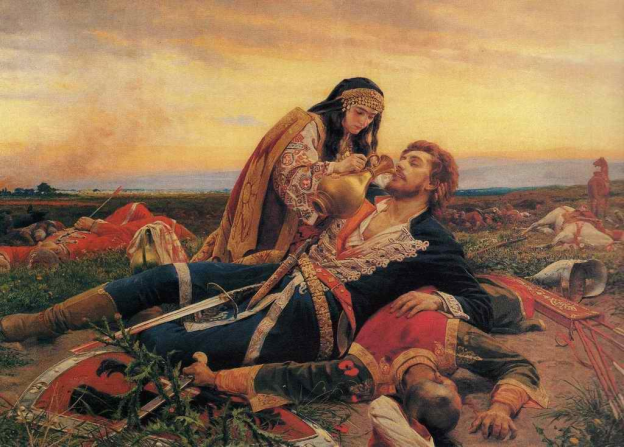
Serbian folk believed that the Balkans were inhabited by different half- gods or demons: dragons, fairies, vampires, witches. The greatest heroes of the Serbian folk tradition were born out of the union of dragons with mortal women, or fairies with mortal men. The dragons protect people, defend the faith, care about fertility, and keep off demons that carry on disease. Their offspring begotten with mortals are branded with a special "dragon sign" and are exceptionally brave and capable. Many heroes of the epic oral poetry belong to this sort of people - Milos Obilic, Banovic Strahinja, Kraljevic Marko. There are also water dragons, carriers of negative influences. Fairies of Serbian beliefs remind us of Greek nymphs. They live near running waters - springs, rivers, and when angry they stop their flow. They also live in the clouds and they can give exceptional strength to warriors whom they had fed with their milk.
Children's folklore retained many elements of old customs and rituals. It contains many songs and games that initiate a child into ideas and concepts of life. It is through such songs and games that a child learns to synchronize its movements, to pronounce words correctly, to count. When the stage of group games is reached, it is through traditional games ("ducks") that a child learns to differentiate between basic and irrelevant things.
With such games a child gets to know about agriculture, cattle breeding, crafts. Girls play with dolls, boys play "heroic games" (wrestling, jumping, stone throwing), preparing for their role in adult life. Some of the adult games have survived only in children's folklore, with some reminiscences of more serious magic rituals. Most of these games develop abilities and quickness in children and teach them to use things from their environment - sticks, stones, dry fruits, etc. Some of them can even be dangerous if the players are not cautious or skilled enough.
Family life
Women are always the mainstay of Serbian families, with men often away - in wars or working and traveling around, plying their jobs, arts, or trades in cities. Left alone to care about the whole farm a woman had to take over man's work as well, and accept it as her chores, which made life very hard for Serbian women. But it added value to the old cult of motherhood that had always existed among the Serbs, and confirmed the honor and distinction of women in Serbian society. An average Serbian family today consists of parents and children. The census of 1863 described an average Serbian household to have 6.5 members against 4 members in 1961, Now it has 3.5 members. In the earlier centuries Serbs lived in large family communities (zadruga). The families are monogamous, marriage is a great event and there are very luxurious wedding feasts, accompanied with many customs and ritual actions by which success, happiness, fertility, and wealth should be assured to the newlyweds (sprinkling the newly wed couple with wheat grains, ritual introduction of bride into the new household and thus, symbolically, into the cult of ancestors). Apart from the civilian marriage (which is the only legal marriage), many young people marry in church nowadays. Village households have domestic animals as a rule, and many families in the cities keep pets (dogs, cats, birds, fish).
Lingual situation.
Serbs speak Serbian, a member of the South Slavic group of languages, specifically the Southwestern group. Standard Serbian is a standardized variety of Serbo-Croatian, and therefore mutually intelligible with Standard Croatian and Standard Bosnian (see Differences in standard Serbian, Croatian and Bosnian), which are all based on the Shtokavian dialect.
Ethnic identity: Ethnic name. Values. Stereotypes. Attitude to other EGs.
Three elements, together with the legacy of the Nemanjić dynasty, were crucial in forging identity and preservation during foreign domination: the Serbian Orthodox Church, Kosovo Myth, and the Serbian language. The identification with medieval heritage through venerating Serbian saints, together with Serbian epic poetry, had helped develop a national consciousness separate from other Orthodox peoples in the Balkans. The heroic epic cycles inspired the Serbs to revive their heroic past and freedom. In the stories, the hajduks were heroes: they had played the role of the Serbian elite during Ottoman rule, they had defended the Serbs against Ottoman oppression, and prepared for the national liberation and contributed to it in the Serbian Revolution.The symbolical Kosovo Myth became the mythomoteur, signifying martyrdom and defence of Serb honour and Christendom against Turks (Muslims). When the Principality of Serbia gained independence from the Ottoman Empire, Orthodoxy became crucial in defining the national identity, instead of language which was shared by other South Slavs (Croats and Muslims).
The Cyrillic script is an important symbol of Serbian identity.Under the Constitution of Serbia of 2006, Serbian Cyrillic is the only script in official use;it is also co-official in Montenegro and Bosnia and Herzegovina. The double-headed eagle and the shield with fire steels are the main heraldic symbols which have represented the national identity of the Serbian people across the centuries.
An international self-esteem survey conducted on 16,998 people from 53 nations was published by the American Psychological Association in 2005;the questionnaire included views of one's individual personality, that of one's own nation and that of other nations. The research found that Serbia was placed first of the most self-esteemed nation, ahead of the United States (6th), and Japan (last place), and the majority of nations, as well as Serbs themselves, agreed on this.The research also noted that Serbia was among the 10 most collectivist nations.
- Serbs – URL. https://en.wikipedia.org/wiki/Serbs
- History of the Serbs – URL. https://en.wikipedia.org/wiki/History_of_the_Serbs#:~:text=The%20History%20of%20the%20Serbs,Europe%2C%20North%20America%20and%20Australia.
- Serb - URL. https://www.britannica.com/topic/Serb
- Сербия- URL. https://ru.wikipedia.org/wiki/%D0%A1%D0%B5%D1%80%D0%B1%D0%B8%D1%8F
-
“To me, you are not a Serb”: Ethnicity, ambiguity, and anxiety in post-war Sarajevo– URL. https://journals.sagepub.com/doi/10.1177/1468796819873141

про публікацію авторської розробки
Додати розробку
